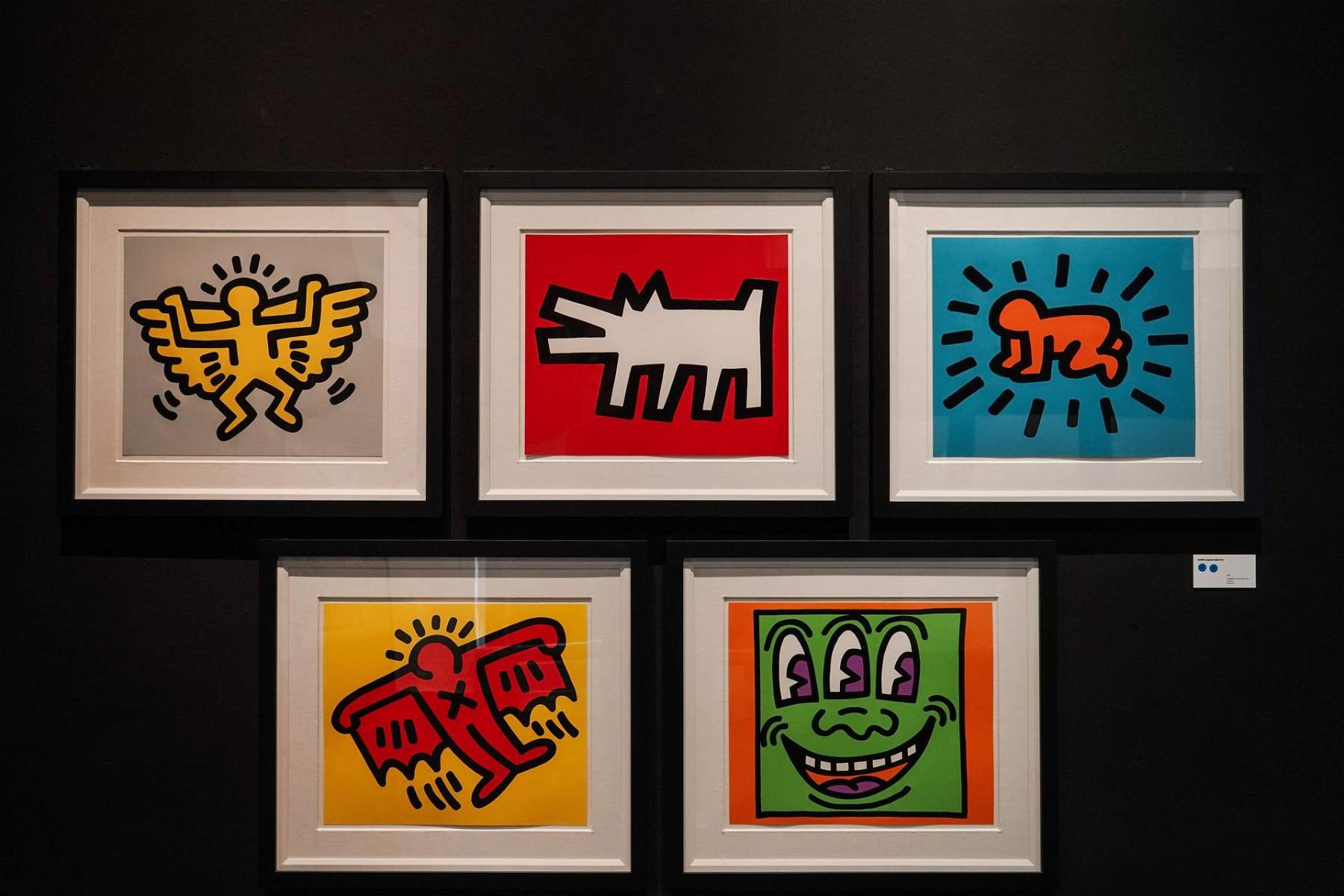Keith Haring on display in Parma, at Palazzo Tarasconi: here's Radiant Vision
In Parma, Palazzo Tarasconi is dedicating an exhibition to one of the greatest artists of the second half of the 20th century, Keith Haring (Reading, 1958 - New York, 1990). It is a repeat of the successful exhibition Keith Haring. Radiant Vision, which arrives in Emilia, Italy, from Sept. 17, 2023 to Feb. 4, 2024, after the four stops of the U.S. tour, the great success at the Villa Reale in Monza and the last stop in Israel. The exhibition, curated by Katharine J Wright, is produced by General Service and Security and GCR, Artistic and Production Direction is by WeAreBeside, and is a traveling project made possible by Pan Art Connections.
The exhibition features more than 100 works by the most celebrated pop artist of the 1980s from a private collection, including lithographs, silkscreens, drawings on paper and posters, illustrating the entire span of Haring’s short but prolific career, examining different aspects of the artist’s life and production, including subway and street art drawings, exhibitions in some of New York’s most famous galleries, the Pop Shop and his commercial work.
An advocate for nuclear de-escalation, civil rights, child welfare and AIDS awareness, Haring has spent his career making posters, public artworks and charitable commissions in support of these vital causes.
In the exhibition, visitors will immediately recognize the Radiant Babies, which permeated American culture in the 1980s and became iconic symbols of the era. The images are powerful examples of how Haring fought for change using art as a platform for his activism. The exhibition project is intended as a tribute to the artist, who was a passionate advocate for social justice and who was always dedicated to young people around the world, advocating for their health and rights while supporting their creative development.
Over the course of his short career, Haring rewrote the rules of contemporary art, integrating the seemingly discrete arenas of gritty downtown New York counterculture and uptown art aristocracy. While working a variety of different mediums (including paintings, prints, posters, drawings, sculpture, and street art) Haring’s style is instantly recognizable. Bold lines, pictographic symbols and bright colors abound in each of his works. A friend of Andy Warhol, Haring has unabashedly explored the marketing potential of his “brand” through commercial partnerships, consumer products and even his own storefront.
The exhibition itinerary is divided into nine sections: from “Iconography,” in which the story is told of how Haring became fascinated with the study of symbols, and although his drawing skills improved the lines evolved into runic pictograms giving rise to his visual lexicon: barking dogs, radiant children, smiling faces, scarred men, dancing figures, pulsating crowds, glowing televisions and extinguishing UFOs, among other symbols. This is followed by a recounting of Haring’s beginnings and life in New York City, where he moved in 1978 to study at the School of Visual Arts, and the section devoted to “Social Justice,” where with works such as Untitled (Apartheid), a two-panel painting depicting a large black figure struggling to free himself from the noose of the white oppressor, Haring supports the anti-apartheid movement.
One section is devoted to work done with young people, on display is the Kalish Suite a group of eleven etchings representing the joint effort of Haring and Sean Kalish, an elementary school child who attended the Pop Shop and showed an early talent for dynamic, linear drawings similar to Haring’s. The two struck up a friendship and created this suite of wild, surrealist images together over the course of several studio visits, passing each work from hand to hand until it was considered complete. Also on display is Medusa Head, the largest print Haring ever made, more than two meters long and nearly five feet high.
The work was created in collaboration with Danish printmaker Borch Jensen, who, after meeting Haring at a dinner party, invited the artist to experiment with his newly installed, three-meter-long printing press. The work is a modern retelling of the Greek tale of Medusa, a winged woman whose hair was composed of snakes that could turn bystanders into stone. For Haring, who had witnessed the deadly effects of AIDS in 1986 but had not yet been diagnosed, the mythical monster was an appropriate symbol of the terrifying disease that killed his healthy young friends in the blink of an eye.
The exhibition opens Wednesday through Sunday from 10 a.m. to 7:30 p.m. Closed on Mondays and Tuesdays. Tickets (including audio guide): full 14 euros, reduced 12 euros, VIP package 20 euros (ticket + pocket guide), schools 6 euros. For exhibition info: www.palazzotarasconi.it/mostra/radiantvision
 |
| Keith Haring on display in Parma, at Palazzo Tarasconi: here's Radiant Vision |
Warning: the translation into English of the original Italian article was created using automatic tools. We undertake to review all articles, but we do not guarantee the total absence of inaccuracies in the translation due to the program. You can find the original by clicking on the ITA button. If you find any mistake,please contact us.





























